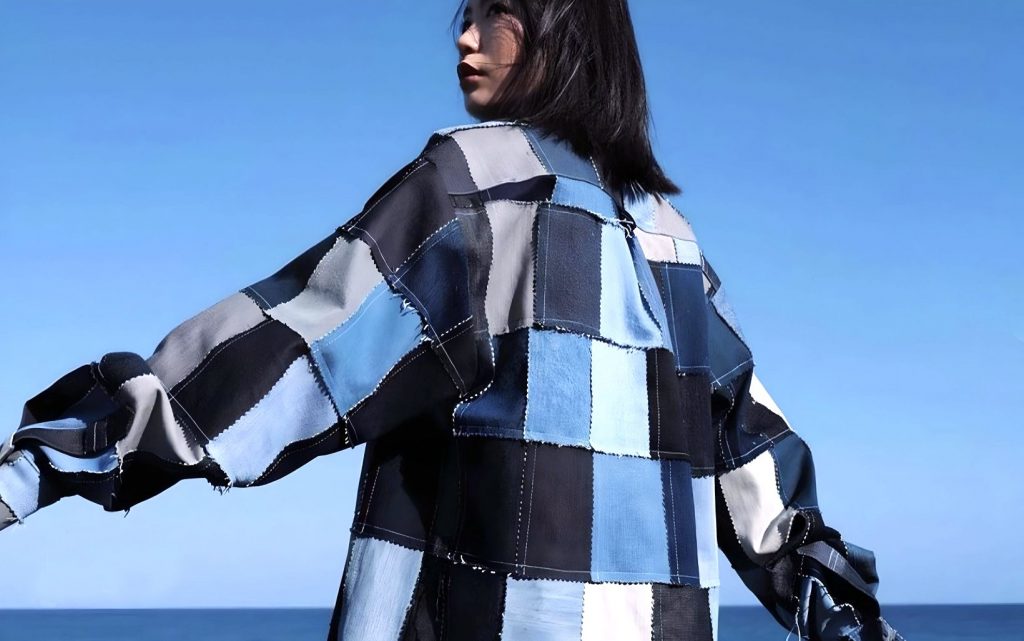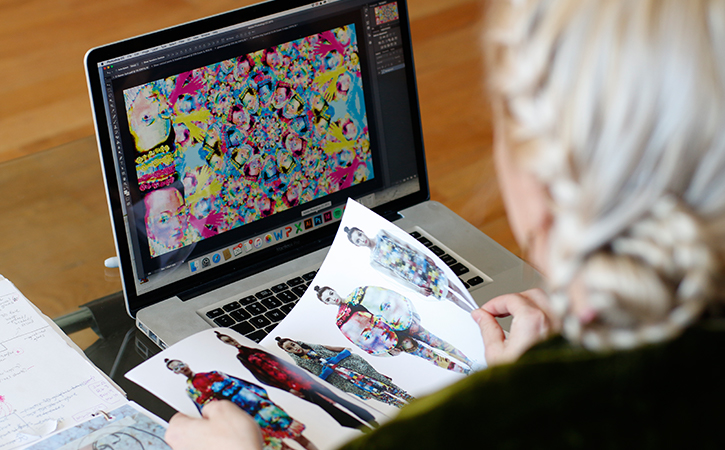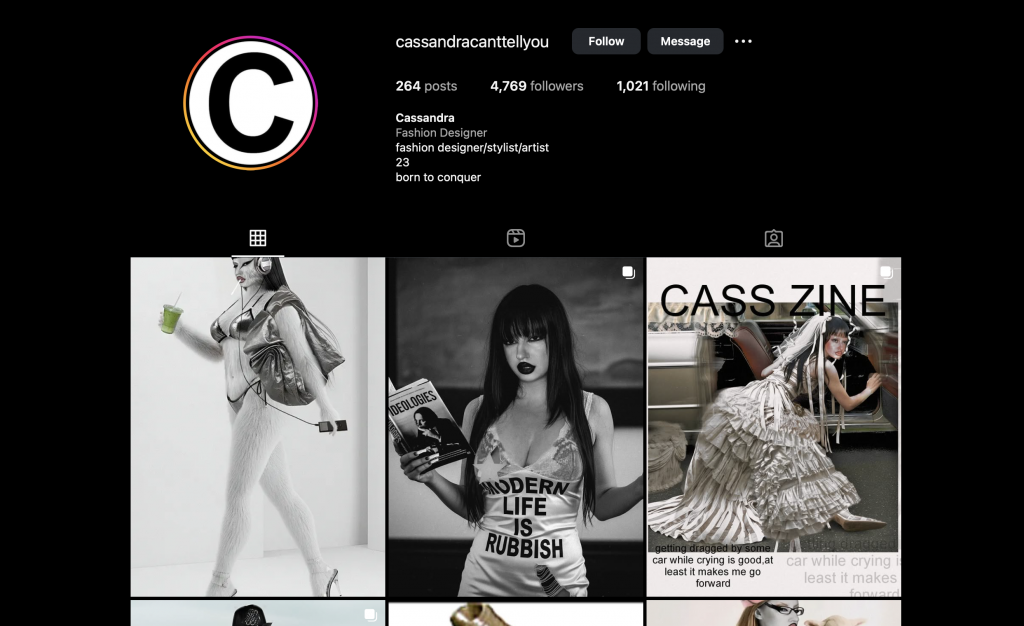By Muhammed İsmail Uçar
In my other blog post, Deadstock Is Drowning Fashion: The Ugly Truth Behind Sustainability, I explored how overproduction, ever-shifting trends, and poor planning create massive waste in fashion. The pieces that never make it to shelves don’t just disappear, they pile up. That’s exactly where upcycling steps in, turning what’s forgotten into something new, valuable, and full of soul.

What Is Upcycling and Why Does It Matter?
Upcycling is the art of taking waste, leftover, or old materials and turning them into something with more function and meaning. It’s not the same as recycling which usually breaks materials down to remake them from scratch. Upcycling skips that step. You take an old pair of jeans, for example, and turn them straight into a skirt. No chemical processes, no melting things down just creativity, vision, and a sewing machine.
The beauty of upcycled fashion lies in its uniqueness. Each piece has its own backstory, texture, and transformation journey. That’s what makes it special you’re not just buying a product, you’re buying an idea, a memory, a statement.
And thanks to tech, this process is evolving fast. Tools like Recovo help brands analyze their leftover fabric stock using data, making it easier to repurpose excess materials instead of wasting them. These kinds of SaaS (Software as a Service) platforms aren’t just cutting costs, they are helping build a circular economy, one remnant at a time.

The Power of Digital Design: Sustainability Meets Creativity
Traditional fashion design often means endless samples, wasted textiles, and energy-heavy processes. But digital tools are rewriting that story. Photoshop, for one, allows designers to test collections entirely digitally before even touching fabric.
It’s no longer just a photo-editing tool, it’s a digital atelier. Designers can visualize colorways, textures, silhouettes, and combinations long before they cut anything. That means less waste, more precision, and faster decisions.
Even more exciting? Photoshop unlocks creative freedom. Styles that would be too expensive, complicated, or impractical in real life can come to life on-screen. Designers are now using digital design to push boundaries and explore surreal, even utopian aesthetics that would be impossible on a real-life runway. It gives sustainability a new language one that speaks through art.
And then there’s AI. Tools like Refabric can analyze uploaded fabric visuals and suggest trending design concepts tailored to the materials. Tilda’s AI-powered upcycled collection is a perfect example, combining secondhand denim and even unused digital files to create something new. Inspired by Japanese “Boro” stitching, the collection reimagines what both physical and digital scraps can become.
Generative AI also helps predict which items are likely to trend, allowing designers to build smarter, more intentional collections. With fewer missteps, there’s less overproduction—and that’s a huge win for sustainability.
The result? You don’t need a massive studio or endless resources to design anymore. All you need is an idea, a laptop, and the willingness to reimagine what fashion can be.

A Young Designer’s Take: Digital Upcycling as Art and Activism
As upcycling takes on a bigger role in the fashion industry, creative voices in this field are more valuable than ever. The younger generation, combining digital tools with sustainable design, is not only creating aesthetics — they’re shaping a new ethical approach. One of the most striking names within this transformation is Istanbul-based fashion design student Gizem Erhan.
For Gizem, digital design is not just a tool for sustainability, but also a form of expression — even resistance. By using tools like Adobe Photoshop and AI, she creates endless combinations from existing materials in the digital space. This experimental process redefines not only physical production, but the conceptual limits of fashion design.
Her work has been exhibited in Venice, featured in Vogue US, and is actively shared on Instagram at @cassandracanttellyou. Now, to close this article, let’s turn to Gizem’s own words — where sustainability becomes personal, artistic, and powerfully intentional:
“As a designer and stylist, sustainability isn’t just a buzzword to me, it’s a necessity, a creative challenge, and a love language to the planet. The world doesn’t need more clothes. What it needs is more vision, more reinvention, more soul. That’s where my work begins, not with brand-new materials, but with stories that already exist.
Upcycling isn’t just about patching the old. It’s about seeing potential in what’s overlooked. And tools like Photoshop and AI have completely revolutionized how I approach that process. They’re not just editing platforms, they’re sketchbooks, mood boards, time machines. They allow me to reimagine garments over and over again without cutting a single piece of fabric.
I’ll take the same vintage skirt, the same top, the same oversized jacket and digitally restyle them in endless ways before ever sewing or pinning a thing. Photoshop lets me manipulate silhouettes, textures, and combinations. I layer, distort, blend, and reimagine. AI fills in the gaps, helps me prototype, create moodboards, even envision how pieces will look in motion, in different bodies, on different streets around the world. I call it digital upcycling a way to expand the life of a garment through concept before production.
The magic is in transformation. I can use the same dress I thrifted five years ago photograph it once, and restyle it into ten different narratives. One day it’s punk royalty, the next it’s cyber romantic. With each shift in styling, a new identity is born. It reminds me that fashion doesn’t need to be fast to be exciting. It just needs to be intentional.
What I love most about digital tools is how they democratize fashion. You don’t need a full atelier or a massive budget to explore ideas. You need vision, and maybe a basic version of Photoshop and a little bit of obsession. These tools let me be bold without being wasteful. Experimental without guilt. I can explore exaggerated proportions, surreal edits, or metallic textures and then choose consciously when it’s time to bring them to life in physical form.
Designing sustainably isn’t about being perfect. It’s about being poetic in your process. It’s about turning an old fabric into a new feeling. It’s about asking: what can I do with what I already have? And then pushing that question as far as your imagination will take you.
Fashion, to me, isn’t just wearable art. It’s memory. It’s rebellion. It’s a soft resistance to waste and a loud celebration of reinvention.
That’s what sustainable design looks like in my world: a little grungy, a little futuristic, and always made with love.”
References
https://www.greenhive.io/blog/upcycling-fashion
https://www.designersnexus.com/fashion-design-free-tutorials-training-videos/photoshop-fashion-design-industry
https://blog.refabric.com/upcycling-fashion-with-ai-fashion-design
https://www.dupbytilda.com/hall1.html
https://www.vogue.com/article/gizem-erhan-turkish-design-student-instagram
Some content in this article was originally written in Turkish and translated into English using AI-assisted tools for clarity, tone, and coherence.
Leave a Reply